American Boulevard Station – Public Art – Elliott
Title: Then Till Now: A History and Culture Based Portrait of Minneapolis
Artist: Richard C. Elliott
Material: 4” x 8” Holland Pavers, custom-pigmented concrete
Paver design on the platforms of the station influenced by local Native American beadwork patterns.
The paver designs in the platform of this station are based on Native American beadwork. The southbound platform is based on Ojibway beadwork and design while the northbound platform is based on Dakota beadwork and design.
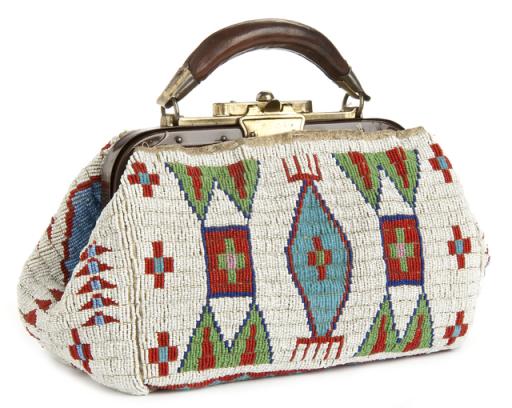
A Dakota bag decorated with geometric beadwork. Given to Frances Densmore from Chief Red Fox of the Standing Rock Reservation, North Dakota in the 1910s.
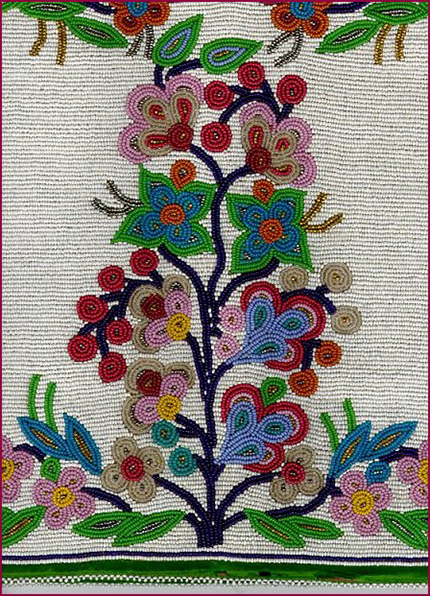
Ojibway beadwork
Based in Ellensburg, Washington, Richard Elliott was an artist inspired by the light and patterns found in nature. Elliott became recognized nationally for developing paintings using reflectors, a process he patented.
He fused light, color and radiant geometric patterns to reflect nature on both macro and micro levels, illuminating the fundamental patterns of energy. His commissioned works have been created for entities ranging from the New York Transit System to Minneapolis’ light-rail system to the University of Washington’s Henry Art Gallery to the Ellensburg Public Library.
His achievements included American’s for the Arts Recognition for Innovation in Public Art, The Larson Gallery Arts Award for Outstanding Contributions to the Arts and The Governor’s Award in the Arts, Olympia, Washington, to name a few.
Richard Eliott's website
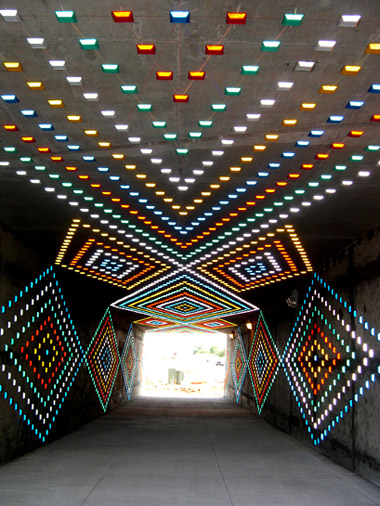
Thunder Over the Rockies, Belleview Light-Rail Station Pedestrian Tunnel, Denver, CO - 2007
American Boulevard Station, and five other stations, originally had paver designs on the platforms created by artist Richard Elliott. Each platform was inspired by artifacts or architectural details found in the Minneapolis/St. Paul communities and were developed by working with museums, community members and curators. The specific designs selected as inspirational starting points were picked for their cultural and historical importance and fall into three groups; native motif, immigrant fabrics and the culture that has developed in Minneapolis as expressed through its architecture. Each platform design stands on its own, but together they make a unified statement about the cultural history of Minneapolis.
Collectively, the artwork is titled, Then Till Now: A History and Culture Based Portrait Of Minneapolis As Expressed Through Six Geometric Platform Designs and originally appeared at Cedar-Riverside, Franklin, 38th Street, 46th Street, VA Medical Center and American Boulevard stations.
Unfortunately, the paver bricks did not hold up well with the severe Minnesota winters and the heavy foot traffic of a transit system. The only remaining paver design exists at American Boulevard Station.
Richard Eliott's website
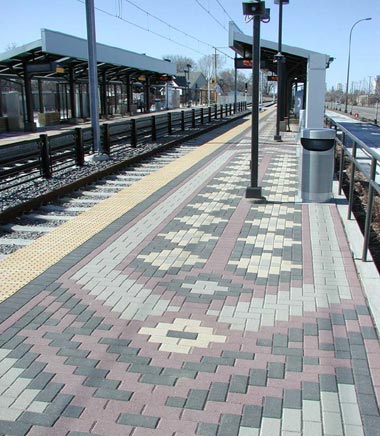
This image on the northbound platform: To represent commerce, the artists used patterns from the 1901 Grain Exchange, designed by Minneapolis Architects Kees and Colburn at the 46th Street Station. 200’ x 9’
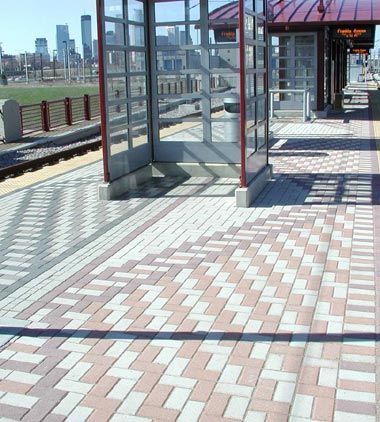
This image: The native influence is seen in Franklin Street Station and is based on two 1,400-year-old pottery shards from the Cambria site along the Minnesota River. 200’ x 16’

This image: An African woven feather textile inspired Cedar/Riverside Station. 200' x 16'